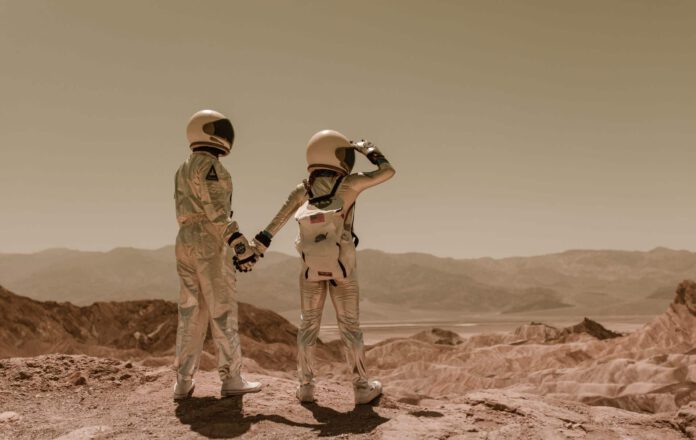
Breakthrough Research: Mouse Embryos can Develop in Space
For the first time, researchers have successfully facilitated the growth of mouse embryos in space. This suggests that within a crucial early stage of development, embryos do not seem to struggle with a reduced gravity environment, an encouraging revelation for future space travelers.
A Future in Space
In the present times, the majority of mankind is confined to earth. However, expectations suggest that this may change, as the possibility of colonizing other celestial bodies, such as Mars, emerges. The journey to such colonization involves lengthy space travel, with astronauts living in close quarters aboard a spacecraft. In such scenarios, it’s conceivable for romantic sparks to fly, leading to the birth of a literal “Mars baby”. This, however, assumes that things in space work the same as they do on earth, which is not the case. Gravity within a cramped spacecraft is greatly reduced and astronauts, and potentially their unborn offspring, are exposed to far higher levels of radiation. These precarious conditions have triggered doubts about the feasibility of embryonic development in space, a question that has intrigued scientists for quite some time. A study written in the journal iScience provides a preliminary answer to this question.
The Research
For the study, Japanese researchers froze very early-stage mouse embryos and then sent them to the International Space Station (ISS). Once there, the embryos were thawed and allowed to develop for four days into a blastocyst inside a specially designed piece of equipment. Meanwhile, some embryos were exposed to the ISS’s reduced gravity whereas others encountered simulated earth-like gravity. After the four-day period, the development of the embryos was halted, and they were returned to Earth for analysis. Back on Earth, the researchers compared the development of these space embryos with a control group of embryos that were allowed to develop on Earth for the same amount of time.
Promising Results
The findings of the study, now published in the journal iScience, are somewhat reassuring. Although the likelihood of embryos ceasing to develop in early stages, while in space, was found to be five to six times higher, the embryos that did persist developed normally. The researchers wrote, “the embryos that were cultured under reduced gravity developed into blastocysts, with a normal number of cells, a normal Inner Cell Mass (ICM) and trophoblast, and gene expressions that were similar to those of embryos that had developed on Earth or in the ISS under artificial earth gravity”.
A Complex Process
This is encouraging news, as normal embryonic development under reduced gravity is not a given. It is commonly seen among mammals that a fertilized egg will first undergo multiple divisions to eventually form a hollow ball of cells known as a blastocyst over a few days. This mass of cells will eventually form the actual embryo, surrounded by trophoectoderm cells that form the extra-embryonic tissue, such as the placenta. The position these cells occupy in the blastocyst is crucial. It’s intuitive to assume that gravity would play a part in cell placement and consequently in embryonic fate. The scientists say, “If gravity is responsible for cell positioning and the accumulation of ICM cells in one place, then it might not be possible for the cells to differentiate correctly into ICMs or trophoblast cells in space, and it might not be possible for ICMs to collect at one spot in the blastocyst in space.” If gravity does dictate these aspects of mammalian embryonic development, researchers concluded, “Then humans will not be able to reproduce in space.”
Earlier Research
Previous Earth-based studies seem to support this conclusion, as they simulated low gravity conditions and observed early embryonic development. In many cases, embryo development quickly halted or the embryos developed too few trophoblast cells, which suggested “that reduced gravity has a devastating effect on the early development of embryos”. However, the new, real-space study suggests otherwise, indicating that embryos can indeed develop normally in reduced gravity conditions. The researchers attribute inconsistent results to differences in methods of simulating low gravity, most likely due to rotation rather than lack of gravity.
Past Investigations on Other Species
The Japanese researchers’ study builds upon numerous other studies into fertilization and reproduction in space. For example, previous studies demonstrated that the fertilization and embryonic development of sea urchins and amphibians in space was a rocky process. Another experiment with fish, however, revealed that they had no trouble reproducing while orbiting Earth.
Mammals and Space
The new study, however, focuses on mice, which are mammals, setting it apart from the earlier studies. The researchers emphasize, “Mammalian reproduction is complex (…) and different from other taxa. Fertilization and implantation occur in the uterus and the mother supports fetal growth via the placenta until the fetus is fully grown. Therefore, results from studies on animals not belonging to the mammals cannot be used to understand mammalian reproduction in space.” Thus, it was necessary for them to send mouse embryos to the ISS for the very first time.
A Glimpse into the Future
This study adds valuable insights to past research focused on other aspects of mammalian reproduction in space, examining how radiation affects sperm cells or observing how space flight affects pregnant mice and their offspring. Exploring these questions and reviewing the results of this latest study has led scientists to cautiously conclude that “reproduction in space might be possible for mammals, although impairments may occur at some stages of the reproduction process”.
However, the complexity of the subject matter leaves several questions unanswered. It remains unclear, for instance, whether the embryos that developed normally in the ISS can grow into healthy baby mice. Another intriguing question revolves around the possibility of successful fertilization and subsequent embryonic development from sending sperm and eggs to the ISS. Therefore, there is much more to investigate before future space travelers can confidently commence extraterrestrial families.











